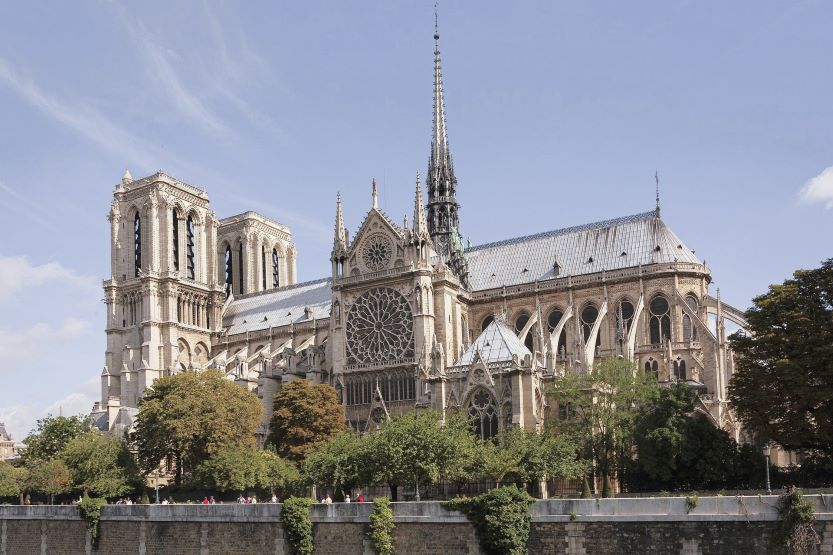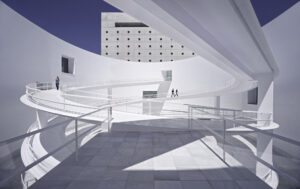Introduction: The Transformation of Stone into Dust
Human aspiration is embodied in gothic architecture. Though history has shown that even the most powerful cathedrals are brittle, its soaring vaults, multicoloured stained glass, and towering spires were constructed to survive forever. Numerous mediaeval masterpieces have been lost to fire, battle, and the unrelenting passage of time, leaving us with tragic gaps in our architectural history.
However, what if the loss was not irreversible?
A REMARKABLE change is taking place today. Using state-of-the-art technology—the same techniques used to create futuristic cars and video games—architects, historians, and computer scientists are accomplishing something that was previously exclusive to science fiction: the Digital Resurrection of vanished Gothic masterpieces.
This is the production of a flawless, everlasting twin, preserving our most treasured legacy, not only a sketch of what was.

Stained glass: the Gothic Revival and beyond
The Heartbreaking Vulnerability of Tradition
There is a strong emotional bond with these structures. The world experienced a visceral loss as the spire of Notre Dame in Paris collapsed in the 2019 fire. It served as a powerful reminder of how precarious our built history is.
For generations, the only way to see buildings that had been demolished was to look at ancient engravings, broken blueprints, or frequently inaccurate paintings. Decades passed while researchers attempted to reconstruct the original layout of buildings such as the 1802-demolished Lady Chapel of Saint-Germain-des-Prés in Paris.
Though it rarely resulted in certainty, this kind of meticulous work frequently produced educated assumptions. Gothic history’s missing chapters were quiet.
Digital tools have the potential to permanently remove that uncertainty. By documenting the architectural DNA in advance of calamity, we establish a backup, a digital stronghold for our communal memory.
:max_bytes(150000):strip_icc():focal(749x0:751x2)/notre-dame-cathedral-fire-112924-2-5795454d4e9c4df58db9ac61cdd32caf.jpg)
The Notre Dame Cathedral in flames on April 15, 2019.
Credit: PATRICK ANIDJAR/AFP via Getty
The UNIQUE Toolkit: Digital Twin and Lidar
This digital resuscitation is based on carefully collected facts rather than mysticism.
Lidar (Light Detection and Ranging) is the essential technology. Lidar scanners measure the precise distance to each surface of a structure by sending out billions of laser pulses. A huge “point cloud”—a digital skeleton of the building made up of billions of small, exact coordinates—is the end outcome of this operation.
The data is combined with photogrammetry, which maps textures and colours using thousands of high-resolution photos, to create an item called a Digital Twin.
A perfect, three-dimensional replica of a real thing is called a digital twin. It enables historians to examine structural stress, undo centuries of changes, and even model the building techniques of mediaeval builders.
It is a potent fusion of engineering and art that turns a tangible monument into an enduring collection of data. The density of the information takes the place of the stone’s weight.
![]()
Gothic Cathedral Chartres France
Case Study: The EVOCATIVE Blueprint and Notre Dame
Notre Dame is the best illustration of how the Digital Twin can save lives.
A thorough point cloud of the cathedral was created using Lidar by renowned architectural historian Professor Andrew Tallon of Vassar College years prior to the fire. His study, which was motivated only by intellectual interest, was abruptly turned into the most crucial restoration blueprint.
The reconstruction team would have had a very difficult time returning the intricate geometries of the vaulting and roof structure to their original shapes without Tallon’s EVOCATIVE data. In order to ensure faithfulness to the original design of the mediaeval builders, the Digital Twin became the cornerstone of the physical rebuilding endeavour.
A new rule for heritage conservation is demonstrated by this case study: “If you build it, scan it.” These days, digital documentation is just as important as physical upkeep.
Researchers can also finish incomplete histories thanks to this technique. The foundational remains and written descriptions are being used to create a very accurate virtual structure for the reconstruction of places like the long-lost Lady Chapel of Saint-Germain-des-Prés. These endeavours are a type of three-dimensional scholarly hypothesis testing, not conjecture.

Église Saint-Germain-des-Prés
Going Beyond Repair: Discovering the Lost World
Digital resurrection’s power goes well beyond the building site. It provides spectators with a fresh, profoundly humanised approach to history.
Imagine donning a virtual reality headset and exploring the streets of 13th-century London, seeing the construction of a Gothic Guild Hall, or entering a cathedral’s spire prior to its destruction.
Building memory is becoming a living experience thanks to virtual reality (VR) and augmented reality (AR). By enabling viewers to quickly transition between the Romanesque, Early Gothic, and High Gothic versions of the same building, historians can now produce “phased reconstructions,” which help users understand centuries of development.
This implies that the history of architecture is no longer limited to flat textbook illustrations for students. With a sensation of presence that was previously unattainable, they are able to investigate the Gothic style’s mathematical harmony, flawless geometry, and amazing verticality. Studying architectural history is elevated from documentation to involvement.
In Conclusion, The Echoes Will Always Be There
Gothic architecture is known for its lofty goals and brilliant structural design. By guaranteeing that the flawless echo of the stone’s pattern endures even after it is destroyed by time or tragedy, the era of Digital Resurrection honours that goal.
A new paradigm for conservation has been created by the fusion of mediaeval art and contemporary technology—the emotional pull of virtual reality to experience the past and the ability of Lidar to capture it. Today, our architectural legacy is both digitally and structurally sound.
No longer are the REMARKABLE buildings of the past merely relics. They are dynamic data sets that are prepared to whisper their messages to any generation that wants to hear them. Whenever we search for them, our lost masterpieces will be reborn because they have merely relocated into the digital sublime.
For more blogs like this CLICK HERE!!
Reference
The Digital Nature of Gothic | PDF | Gothic Architecture | Beauty





